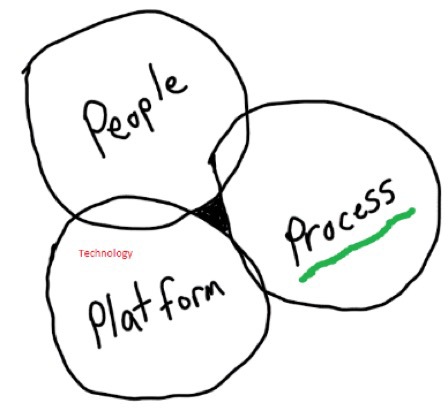December 01, 2020
6 Steps to Platform as a Service
Drive greater flexibility with scale, maintainability, support and faster change.

In two of my previous posts I discussed people and platform. In this post I’m going to share six steps to help your organization get started with platform as a service (PaaS). As with any new solution, it’s important to map out the implementation strategy.

Whether your using Infrastructure as a Service (IaaS), PaaS, or serverless, an enterprise architect along with your cloud center of excellence provides “recommended practices.” Agree or disagree, a decoupled component design provides flexibility with scale, maintainability, support and empowers faster change while remaining stable.
Learn how CDW and Microsoft Azure can help you meet your Platform as a Service goals.
At this point you might be thinking, “Is it that easy?” Not really. Like any project, planning is required. The plan should be iterative with 2-3 outcomes and with 2-6 team members. First, identify yourself: are you application development or the IT operations infrastructure persona? For example, consider this blog post that describes Microservices: Change is here today and is impacting our processes. Traditionally, these two personas do not know each other, but they should not be afraid of each other. Get to know them, and working together might look something like this:
Application Developers and IT Operations
Created shared governance understanding; talk to each other regarding the company’s vision.
Step 0
IT Operations has enabled application developer to minimally experiment and try different solution services (for example, PaaS “services”).
Step 1
Idea and/or request from product owner for new workload, feature or capability. There are several “services” to evaluate to increase profitability and productivity.
Step 2
Within the Test/Dev Subscription or via Visual Studio subscription for your developers; this enables experimentation to develop workloads required to try out an idea quickly without the need for IT operations. Develop the new/updated workload as per product owner request.
Because of the pre-work into governance setting up the Azure tenant, there are no worries for IT operations.
Without pre-work or thought there are security risks, spending risks and, potentially, shadow IT risks increase.
Working together, create a build and deployment pipeline along with a definition for targeted environments such as test, stage, A/B testing, canary and production.
Step 3
Using a repeatable process, the application developer (again without IT operations) shares the idea and/or request with the product owner to validate, test and approve with or without gates. How can this be done? It’s leveraging Azure DevOps Pipelines automation.
Working together with IT operations along with application developer, step through together to gain mutual understanding: Ready, Set, Go.
Step 4
Application developer selects the desired runtime and framework (such as PHP, Node.js, .NET).
Step 5
IT Infrastructure selects the desired Azure Service that they understand and support (such as Windows, Linux, containers).
Working together, review what was created with IT operations along with application developer.
Step 6
Application developer and others can respond to any application change requests quickly. Leveraging Azure DevOps Repo or GitHub Repo to version control (Development Language of choice).
IT operations can respond to any environment change requests quickly. Leveraging Azure DevOps Repo or GitHub Repo to version control (Infrastructure as Code).
Consider Digital Velocity
Listen for the term “digital velocity.” It’s not the replacement for DevOps, however it is a must-have requirement especially in light of the pandemic. A November 2020 article highlights several considerations to business success.
The six steps I’ve outlined assist in the “art of the possible.” You will want to also check the propensity of your organization against some basic questions around organizational enablement (people), working practices (process), and technology (platform).
In Summary
To increase velocity and drive excellence push for standards, communication, collaboration and culture to allow for continued transformation and acceleration using cloud technologies. Build cross-functional teams responsible for all areas of success (for example, product owners, application developers, data platform developers, security specialists, quality developers, network specialists, and so on).
Get started by contacting your CDW Account Manager to share your desire to increase your digital velocity and ask about CDW Managed Services for Azure – Basic to enable your organization to experiment through the steps outlined in this article.

Ken Collins
CDW Expert

